A legacy sails again: The allure of a traditional Fujian-style wooden ship
Sign up now: Get ST's newsletters delivered to your inbox
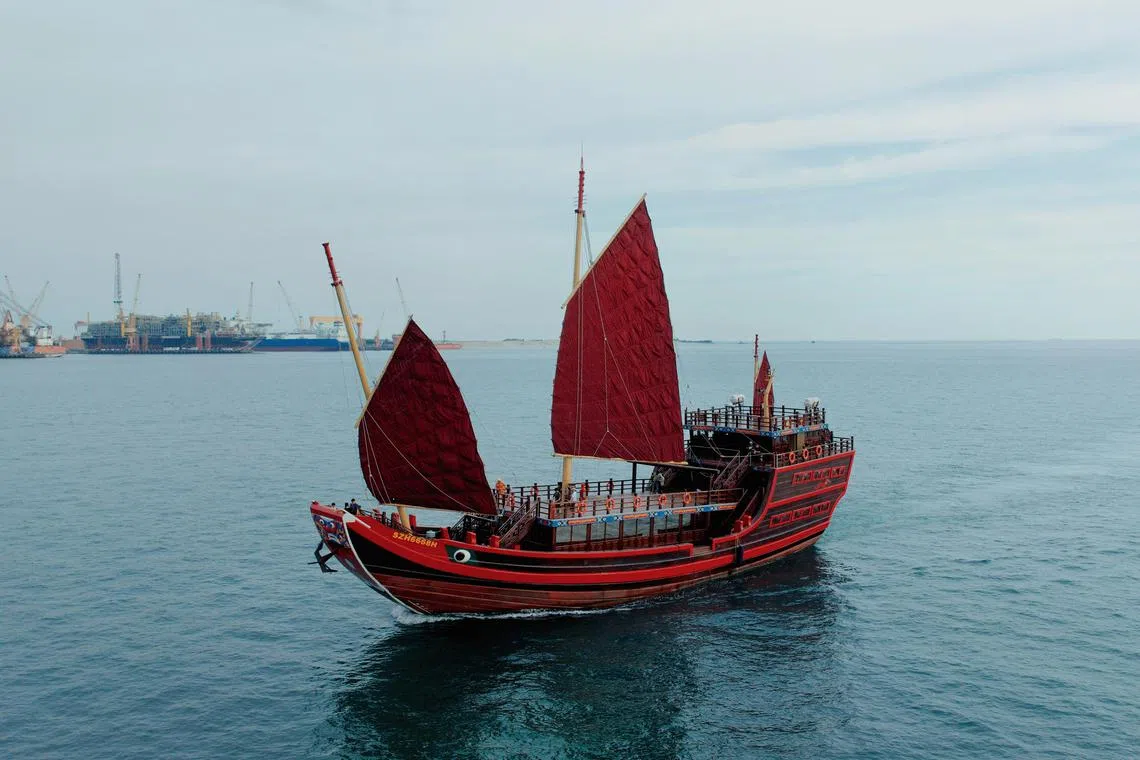
Fu Ning was constructed between 2015 and 2019 as part of a Unesco commitment to preserve and promote traditional Chinese maritime culture.
PHOTO: LIU SHEN HUI
Follow topic:
SINGAPORE – Inspired by the exploits of Chinese admiral Zheng He and a desire to preserve Chinese maritime heritage, Chinese businessman Lin Chang Jiu led the construction of Fu Ning, the world’s largest seagoing traditional Chinese wooden sailing boat. The Straits Times uncovers the antique charm of this vessel that was a highlight of the 2024 Singapore Yachting Festival in late April.

junk04 - INSERT GRAPHICS ELEMENT HERE: CUE_Fu Ning meaning.jpg (ST ILLUSTRATION: LIM YONG) for life
ST ILLUSTRATION: LIM YONG
Why was the ship built?
• Fu Ning was constructed between 2015 and 2019 as part of a Unesco commitment to preserve and promote traditional Chinese maritime culture, focusing particularly on the watertight-bulkhead technology of Chinese junks.
• This important innovation was inscribed into Unesco’s List of Intangible Cultural Heritage in Need of Urgent Safeguarding in 2010.
What is watertight-bulkhead technology?

junk04 - NSERT GRAPHICS ELEMENT HERE: CUE_Fu Ning_Bulkheads.jpg (ST ILLUSTRATION: LIM YONG) for life
ST ILLUSTRATION: LIM YONG
• Bulkheads – or partitions – are used to separate the hull of the ship into several independent, watertight sections.
• This greatly reduces the risk of water leaking into the entire ship if one or two cabins are damaged.
• The sections also double as storage spaces. They can even be filled with water to keep fresh catch.
• Invented during the Tang Dynasty (618-907), it was not until the late 18th century that this technology spread to the West and continues to be used in shipbuilding today.
Building a Fuchuan (a traditional Fujian-style wooden ship)
The building process, overseen by a master shipwright, starts with making a model. Measurements would then be scaled up for building the ship.
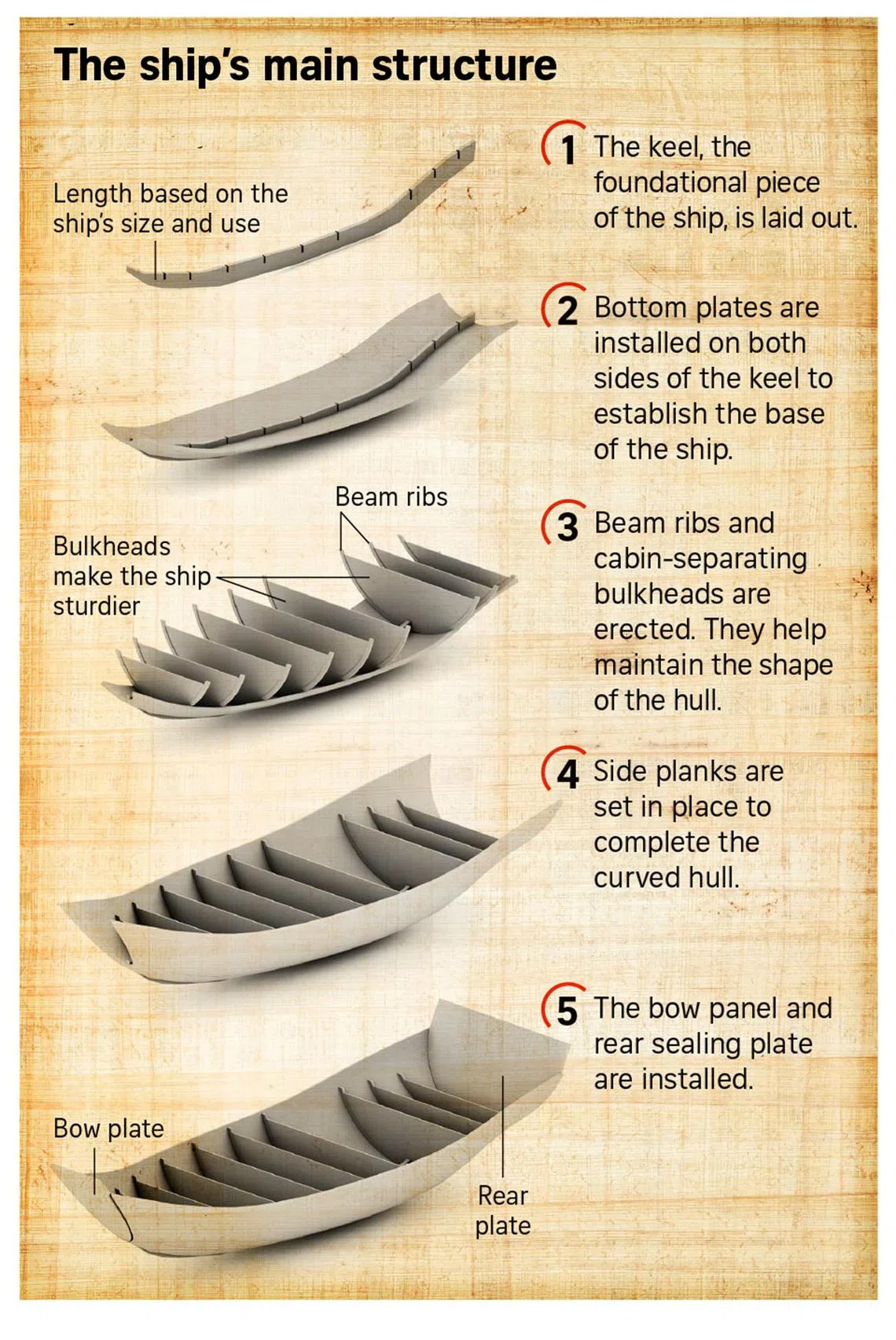
junk04 - INSERT GRAPHICS ELEMENT HERE: CUE_Ship's main structure.jpg (ST ILLUSTRATION: CHNG CHOON HIONG) for life
ST ILLUSTRATION: CHNG CHOON HIONG
The ship
It took 50 workers to build the three-masted sailing ship.

junk04 - INSERT GRAPHICS ELEMENT HERE: CUE_Fu Ning_About the ship.jpg (ST ILLUSTRATION: LIM YONG) for life
ST ILLUSTRATION: LIM YONG
Fu Ning’s interior
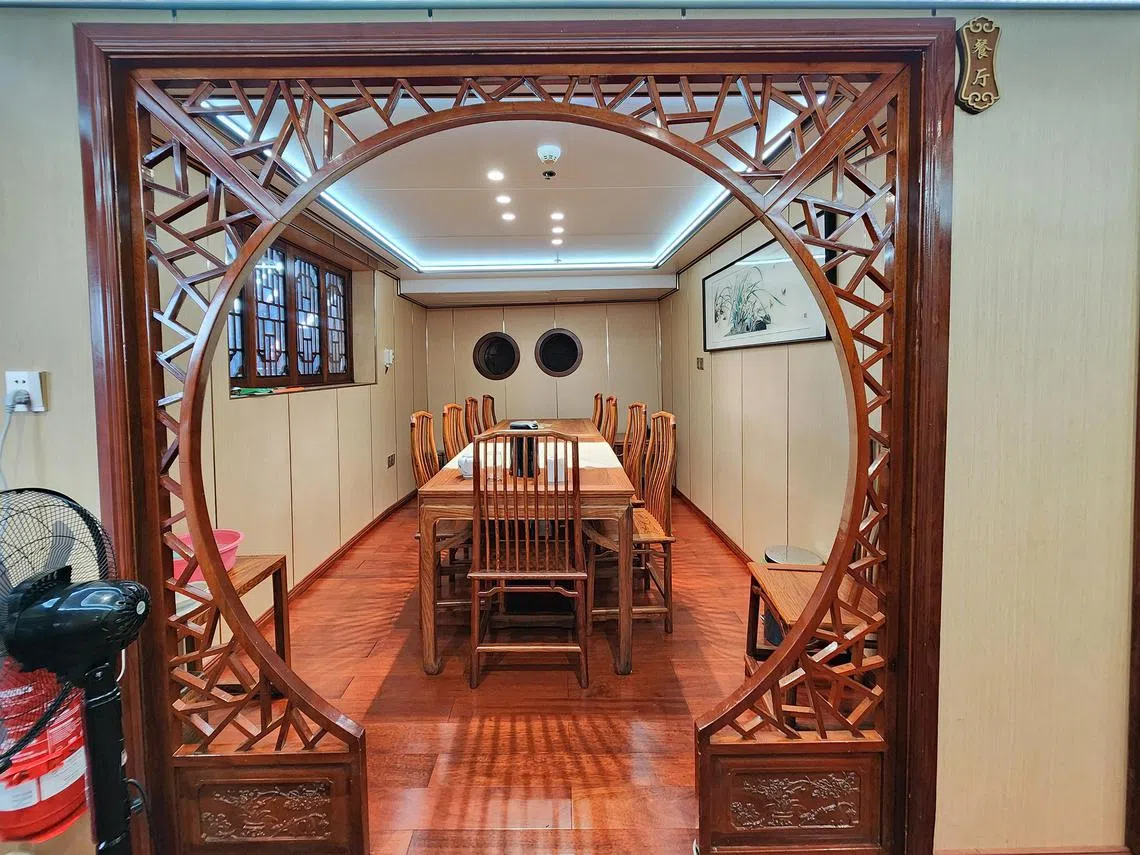
The ship’s dining hall.
ST PHOTO: LIM YONG
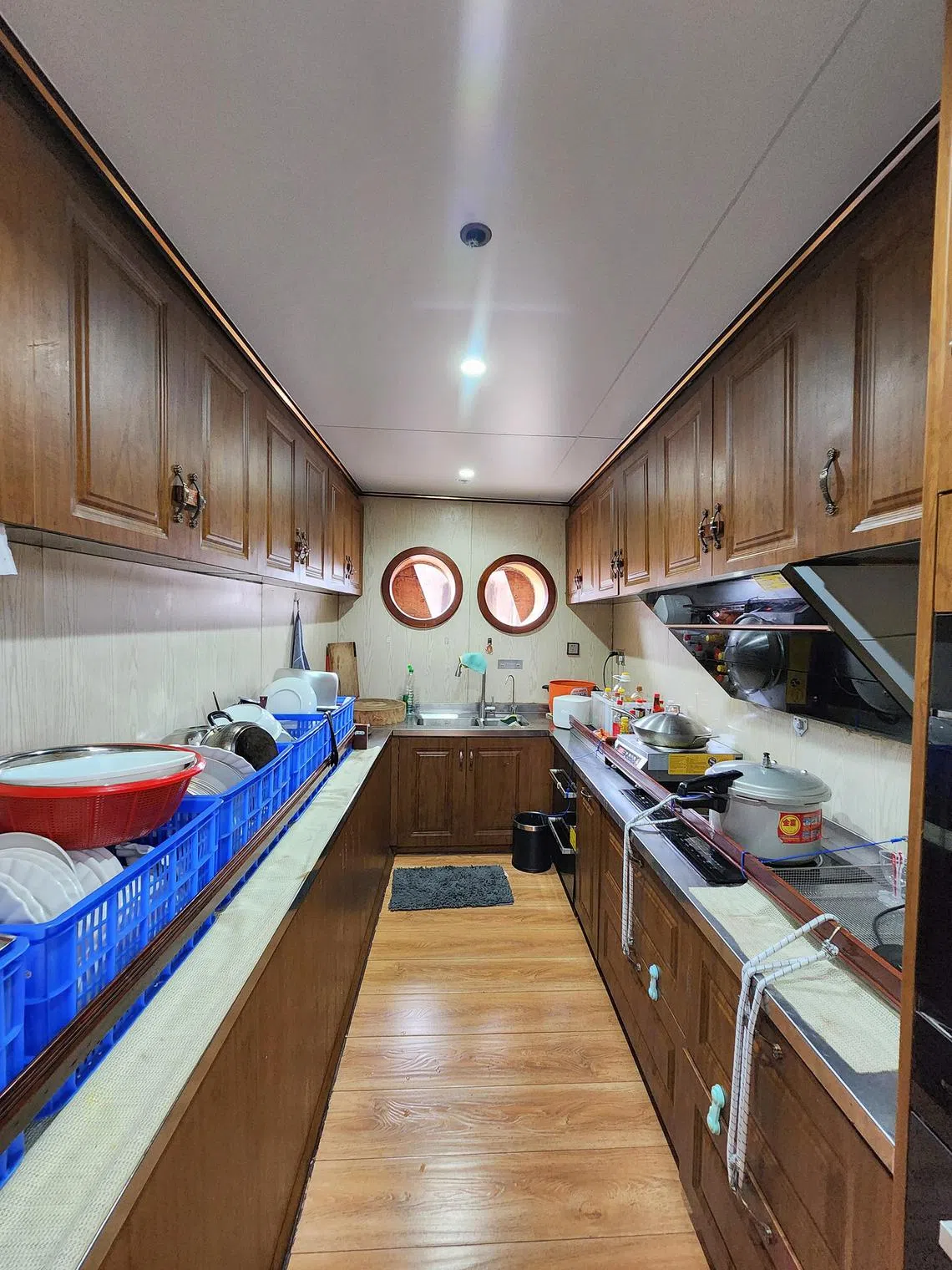
The ship’s galley.
ST PHOTO: LIM YONG
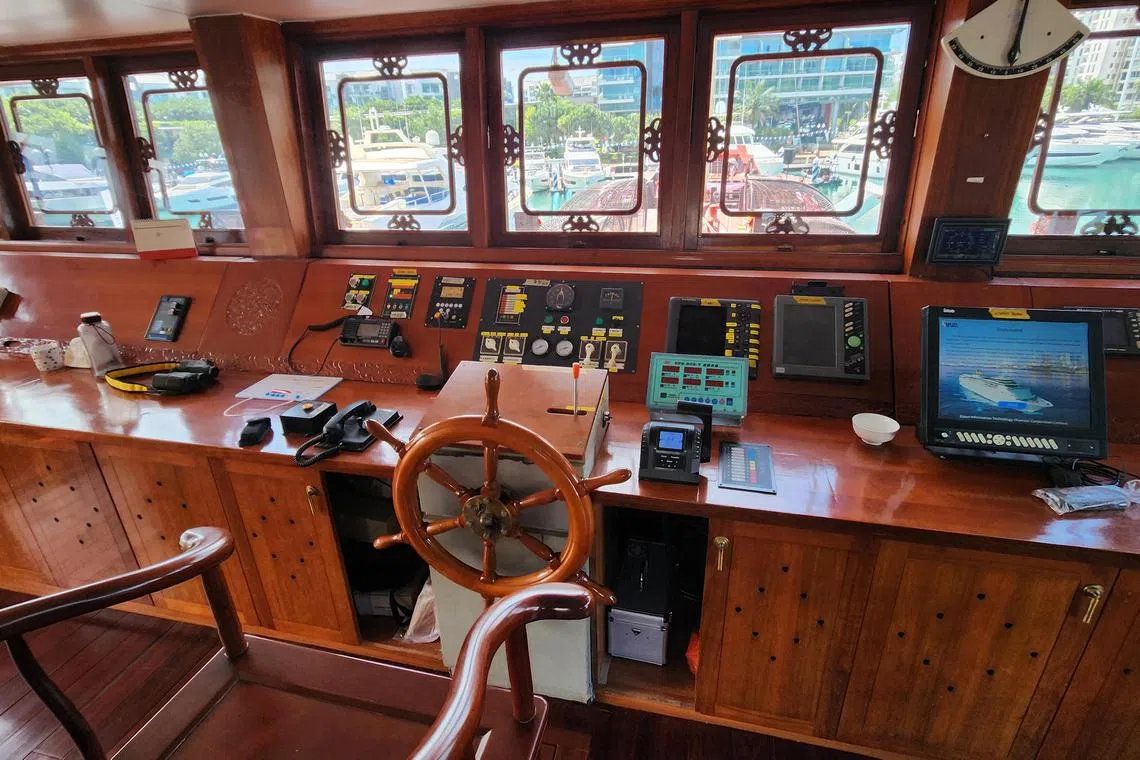
The wheel deck houses the marine navigation systems.
ST PHOTO: LIM YONG
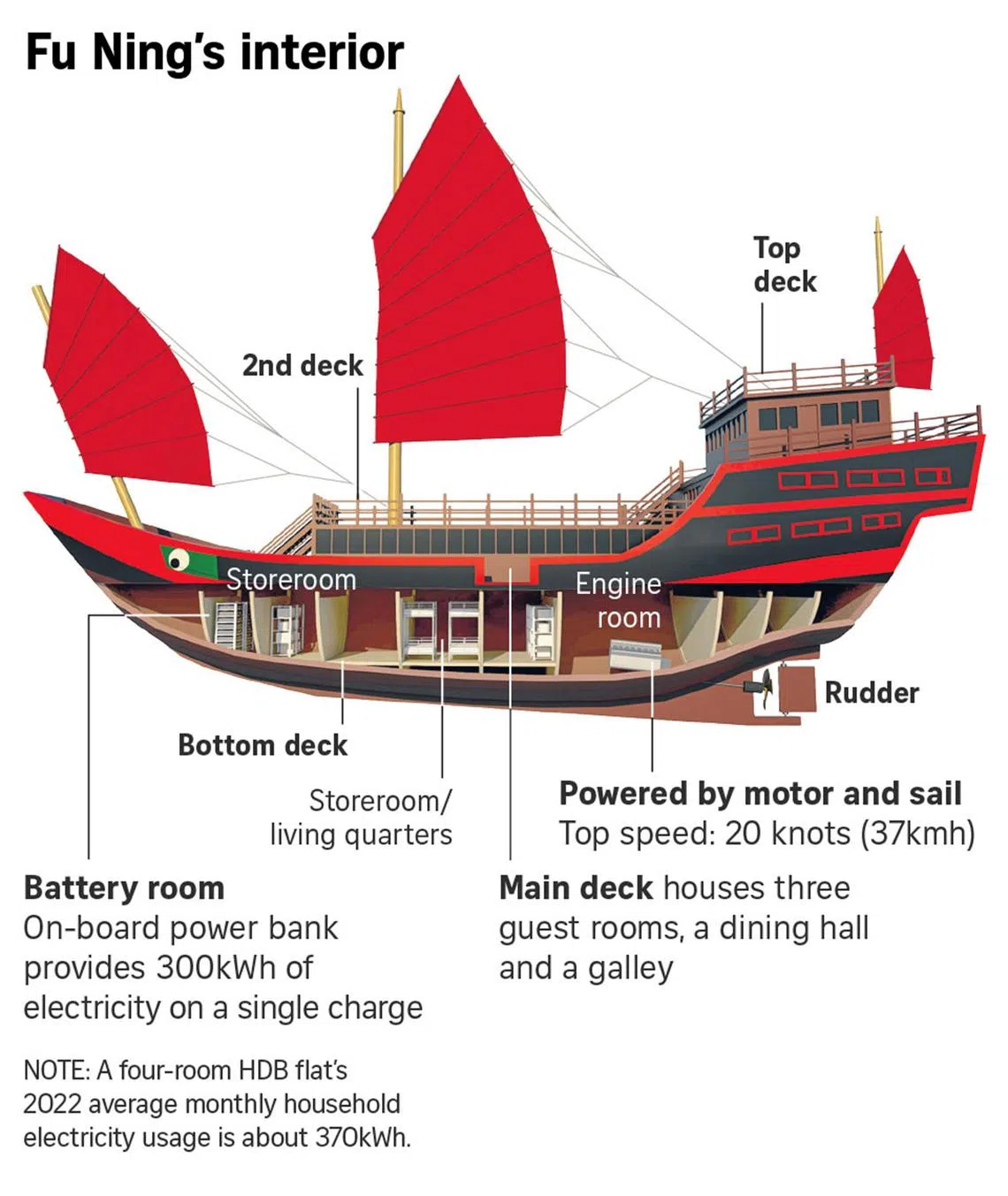
junk04 - INSERT GRAPHICS HERE: (CUE_Fu Ning_Ship's interior.jpg) (ST ILLUSTRATION: CHNG CHOON HIONG) for life
ST ILLUSTRATION: CHNG CHOON HIONG
Journeys to the “western oceans”
Fu Ning hopes to retrace the Maritime Silk Road that Ming Dynasty explorer Zheng He’s Treasure Fleet took 600 years ago.
• Between 1405 and 1433, in a series of seven epic voyages and almost 100 years before Christopher Columbus reached the Americas, Zheng He’s fleets sailed from China through South-east Asia, the Middle East and Africa.
• Tribute items such as jewels, spices, medicines and exotic animals were brought back to the emperor.

junk04 - INSERT GRAPHICS HERE: (CUE_Fu Ning_Zheng He routes.jpg) (ST ILLUSTRATION: CHNG CHOON HIONG, LIM YONG) for life
ST ILLUSTRATION: CHNG CHOON HIONG, LIM YONG
The largest ship in Zheng He’s armada is the Baochuan, or treasure ship, which is a Fuchuan-type ship.

junk04 - INSERT GRAPHICS HERE: (CUE_Fu Ning_Size comparison.jpg) (ST ILLUSTRATION: LIM YONG) for life
ST ILLUSTRATION: LIM YONG

